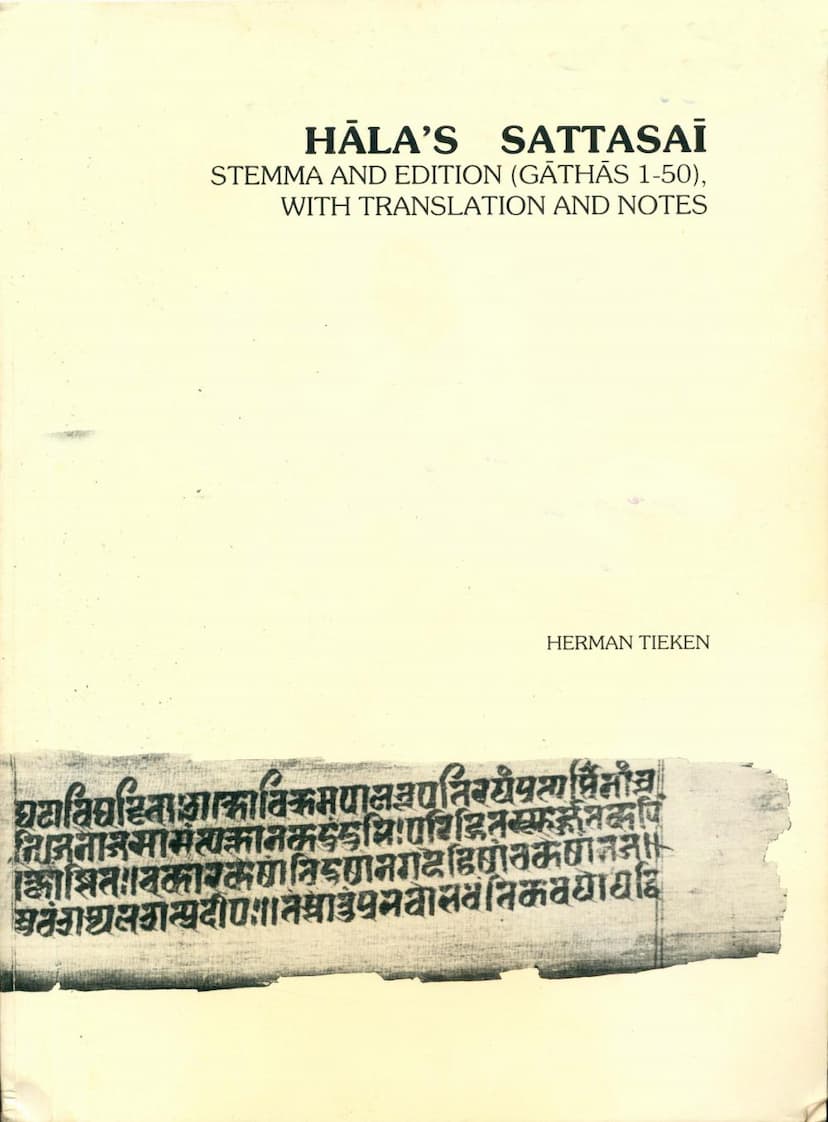Halas Sattasai
Added to library: September 1, 2025

Summary
Here's a comprehensive summary of the Jain text "Halas Sattasai" based on the provided pages:
This work, "Hāla's Sattasai: Stemma and Edition (Gāthās 1-50), with Translation and Notes" by Herman Tieken, is a scholarly study of the Sattasaí (also known as Gāthāsaptashatī, Saptaśataka, etc.), an ancient anthology of 700 erotic verses in Prakrit. Published in Leiden in 1983, it serves as a preparatory study for a complete critical edition of the text.
Key Aspects of the Study:
- Weber's First Edition: The study begins by detailing the foundational, multi-part edition of the Sattasaí by A. Weber, published between 1870 and 1883. Weber based his work on eighteen manuscripts categorized into six recensions, ultimately favoring the "Vulgata" recension as the most authentic, although Tieken suggests many of its readings are secondary.
- Manuscript Tradition: A significant portion of Tieken's work (Part I) focuses on establishing the stemma – the genealogical relationships between the various manuscripts of the Sattasaí. This analysis involves ten of Weber's manuscripts and three newly identified South Indian manuscripts. These three South Indian manuscripts represent a "Third South-Indian recension," distinct from Weber's six.
- Recensions and Archetype: The stemma reveals a division into South Indian and North Indian branches, both ultimately tracing back to a lost "archetype" manuscript. The Third South-Indian recension is found to preserve the original textual readings in many respects, while the Jaina and Vulgata recensions are better at preserving the original order of the gāthās.
- Innovations and Retentions: The method of stemma construction relies heavily on identifying "innovations" (secondary readings or constructions introduced into the text) and "retentions" (original readings). Innovations help in tracing the development and relationships between manuscripts and recensions.
- Eclectic Recensions: Tieken identifies three recensions (Sādhāraṇadeva, Telinga, and Second Telinga) as "eclectic," meaning they were compiled by combining material from multiple existing traditions, often with a topical arrangement of verses.
- Nature of the Text and Audience: Part II delves into the nature of the Sattasaí. Tieken argues that the text does not present a romanticized view of rural life, as often claimed. Instead, the depicted villagers are portrayed as simpletons and misfits, particularly in their romantic lives. The tone is described as superior and patronizing. This suggests the text was intended for a sophisticated urban audience, a "cultured leisure-class" (Nāgaraka) and royalty, who could derive amusement from the depiction of these less fortunate people and perhaps find an outlet for their own frustrations.
- Compiler and Language: The compilation is traditionally attributed to King Hāla of the Sātavāhana dynasty, who likely ruled in the early first century CE. The use of Prakrit, specifically Māhārāṣṭri, for a literary purpose is discussed, with Tieken suggesting it was to give the villagers' words a "rustic and local flavour," reflecting pride in Sanskrit knowledge by both authors and audience.
- Method of Reconstruction: Tieken explains his text-critical method, which prioritizes readings closer to the archetype, often favoring the South Indian recension for textual authenticity and the Jaina/Vulgata recensions for the order of verses. He employs the principle of lectio difficilior (the more difficult reading is often preferred) when stemmatically equivalent variants exist and highlights the significant influence of Sanskrit on the manuscript transmission.
- Variants and Emendations: The study meticulously analyzes numerous variants across different manuscripts, discussing their paleographical origins, potential misinterpretations, and the rationale for adopting specific readings in the critical edition. This includes discussions on phonetic variations, script-specific confusions, and the influence of grammatical traditions.
- Edition and Translation: The core of Part II (Chapter 3) presents the critical edition of the first fifty gāthās, accompanied by English translations and detailed notes. Tieken's translations often differ from Weber's, as they are based on a re-evaluation of the Prakrit text and a critique of traditional Sanskrit commentary interpretations, which he finds frequently flawed.
- Cultural Context: The study touches upon the cultural context, including the erotic conventions, social strata depicted (farmers, hunters, war-leaders, merchants), and the potential for humor derived from a perceived contempt for the rural populace. The identification of "authors" mentioned in some manuscripts is also discussed, with evidence suggesting these names were added later, primarily in the Vulgata recension, possibly to emulate Sanskrit kośa literature.
In essence, Tieken's work provides a detailed scholarly apparatus for understanding the complex textual history and transmission of the Sattasaí, offering new insights into its genre, audience, and the critical challenges of reconstructing its original form.